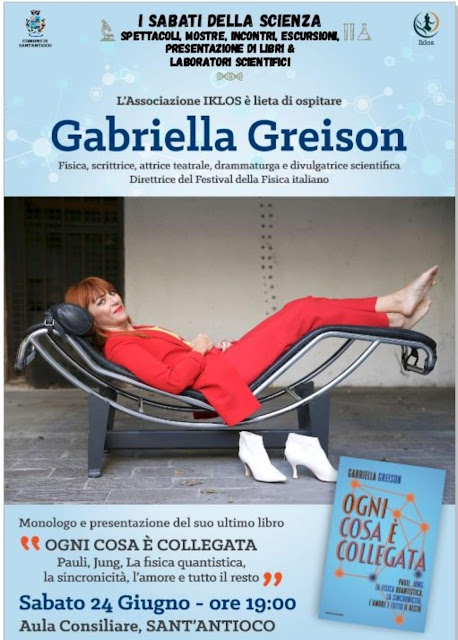Fritjof Capra: from The Tao of Physics to the Systems View of Life. Exclusive interview.
 |
| Portrait of Fritjof Capra [ |
Fritjof Capra gave us an exclusive interview about his view of the universe.
As a 18-year-old student you was seduced by Werner Heisenberg's most popular book: Physics and Philosophy. Why?
«In this book, Heisenberg vividly described the conceptual and emotional struggles of the quantum physicists whose explorations of the atomic and subatomic world brought them into contact with a strange and unexpected reality. In their attempts to grasp this new reality, they became painfully aware that their basic concepts, their language, and their whole way of thinking were inadequate to describe atomic phenomena. Quantum physics forced them to see the world not as a machine, composed of elementary building blocks, but as a network of inseparable relationships. This was the first example, almost a hundred years ago, of the fundamental change of paradigms from the machine to the network, which is pervasive today in science and in society.»
What is a Systems View of Life?
«During the last three decades, a new scientific conception of life was developed at the forefront of science. It is a unified view that integrates, for the first time, life's biological, cognitive, social and ecological dimensions. The universe is no longer seen as a machine composed of elementary building blocks. We have discovered that the material world, ultimately, is a network of inseparable patterns of relationships; that the planet as a whole is a living, self-regulating system. The view of the human body as a machine and of the mind as a separate entity is being replaced by one that sees not only the brain, but also the immune system, the bodily tissues, and even each cell as a living, cognitive system. Evolution is no longer seen as a competitive struggle for existence, but rather as a cooperative dance in which creativity and the constant emergence of novelty are the driving forces. And with the new emphasis on complexity, networks, and patterns of organization, a new science of qualities is slowly emerging. This new science encompasses many concepts and ideas that are being developed by outstanding researchers and their teams around the world. My new book, Vita e natura, coauthored with Pier Luigi Luisi, professor of biology at the University Roma 3, integrates these ideas into a single coherent framework. We call it "a systemic vision" because it involves a new kind of thinking — thinking in terms of relationships, patterns, and context. In science, this way of thinking is known as "systemic thinking."»
How much we can understand complex systems?
«One of the most important insights of the systemic understanding of life is the recognition that networks are the basic pattern of organization of all living systems. Ecosystems are understood in terms of food webs (i.e., networks of organisms); organism are networks of cells, organs, and organ systems; and cells are networks of molecules; and social systems are networks of communications. The network is a pattern that is common to all life. Wherever we see life, we see networks. Indeed, at the very heart of the change of paradigms from the mechanistic to the systemic view of life we find a fundamental change of metaphors: from seeing the world as a machine to understanding it as a network. Now, a network is a nonlinear pattern of relationships, and until recently nonlinear systems could not be modeled mathematically. This changed in the 1970s and 1980s when powerful computers became available that made it possible to solve complex nonlinear equations. The result was a whole new nonlinear mathematics, known popularly as complexity theory and technically as "nonlinear dynamics." Chaos theory and fractal geometry are important branches of complexity theory. During the last thirty years, the strong interest in nonlinear phenomena generated a whole series of new and powerful theories that have dramatically increased our understanding of many key characteristics of life. Our synthesis of these theories is what we refer to as the systemic vision of life.»
Leonardo da Vinci was a forerunner of Systems Thinking?
What is your model of sustainable society?
«What is sustained in a sustainable society is not economic growth or competitive advantage, but the entire web of life on which our long-term survival depends. In other words, a sustainable society is designed in such a way that its ways of life, businesses, economy, physical structures, and technologies respect, honour, and cooperate with nature's inherent ability to sustain life. A very beautiful and detailed description of this vision of a sustainable society is given in the Earth Charter, a declaration of 16 fundamental and interrelated principles to build a just, sustainable, and peaceful world. Created by a global consultation process, and endorsed by organizations representing millions of people, the Earth Charter "seeks to inspire in all peoples a sense of global interdependence and shared responsibility for the well-being of the human family, the greater community of life, and future generations."»
Andrea Mameli
blog Linguaggio Macchina
31 Dicembre 2014





Commenti